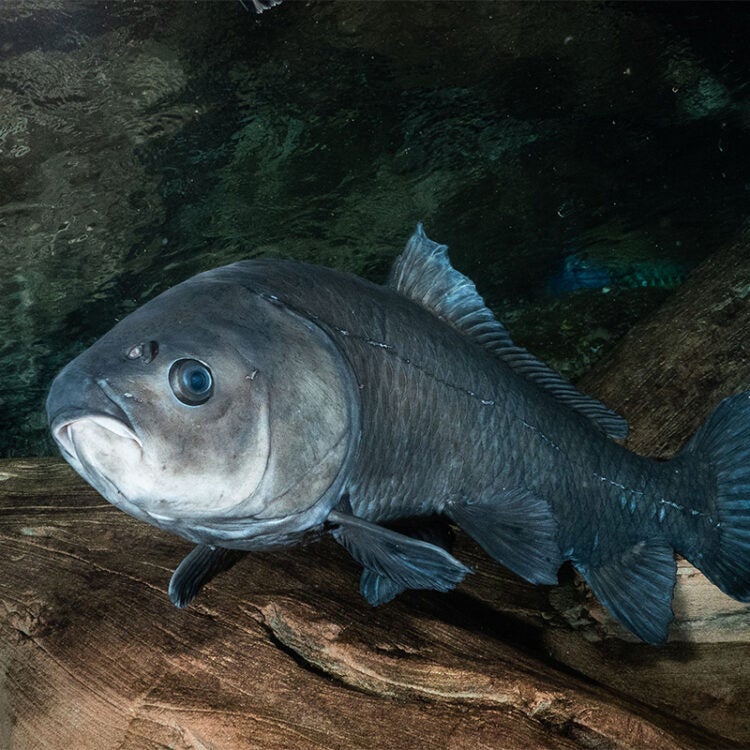-
Size
Up to 3.6 ft (1.1 m) -
Diet
Invertebrates, insects, shellfish, algae -
Range
North America -
Habitat
Pools, backwaters, and main channels of small to large rivers
Physical Characteristics
- The back and sides of the smallmouth buffalo are light brown or otherwise dark with a coppery or greenish tint. Its underside is a pale yellow to white.
- This species is second in size among suckers to the bigmouth buffalo.
- It can be distinguished from the bigmouth buffalo by its small, downward-oriented mouth. In comparison, the mouth of the bigmouth buffalo is forward-facing and larger. Also, the smallmouth buffalo’s back is more elevated, or humped, than that of the bigmouth buffalo.
- The maximum length is listed as 3.6 ft (1.1 m). While the maximum weight has been reported to be 81.6 lbs. (37.3 kg).
Animal Fact
The smallmouth buffalo requires fairly clean and deep water, and its population has declined due to pollution.
Diet / Feeding
- Feeds on invertebrates, insects, shellfish, algae, and other vegetation, by grinding the food with the bony plates in its throat.
Range / Habitat
- Occurs in North America in the Lake Michigan drainage, as well as the Mississippi River basin from Pennsylvania and Michigan to Montana as well as the Gulf of Mexico.
- Found in pools, backwaters and main channels of small to large rivers in most of its range. It also appears primarily in large rivers and warm lakes of the plains states.
- This species requires fairly clean and deep water, and its population has declined due to pollution and siltation.
- It prefers deeper waters than does the bigmouth buffalo and is more likely to be seen over fine substrates.
Reproduction & Growth
- Females can lay 18,000 to 500,000 eggs per year.
Conservation Status
- “Least Concern” on the IUCN Red List.
Additional Information
- Smallmouth buffalo, like the bigmouth buffalo, is of economic importance, contributing significantly to the commercial harvest of fish in the central states.
- Lifespan up to 15 years.
- Other names given to this fish are “razor back buffalo,” “thicklipped buffalo,” and “roachback.”
- Smallmouth buffalo is often confused with black buffalo.
Sources
- www.tpwd.state.tx.us/fish/infish/species/sucker/sbf.phtml
- www.fishbase.org
- McClane’s Field Guide to Freshwater Fishes of North America. McClane, A.J., pg. 98
- he Fishes of Tennessee. Etnier, D.A. and Starnes, W.C., pg. 277






